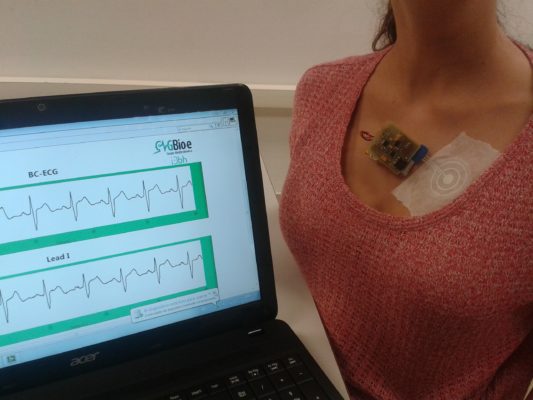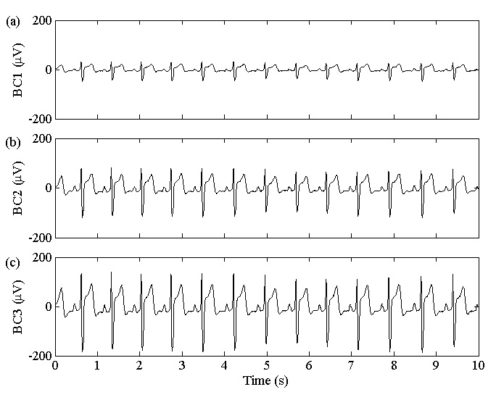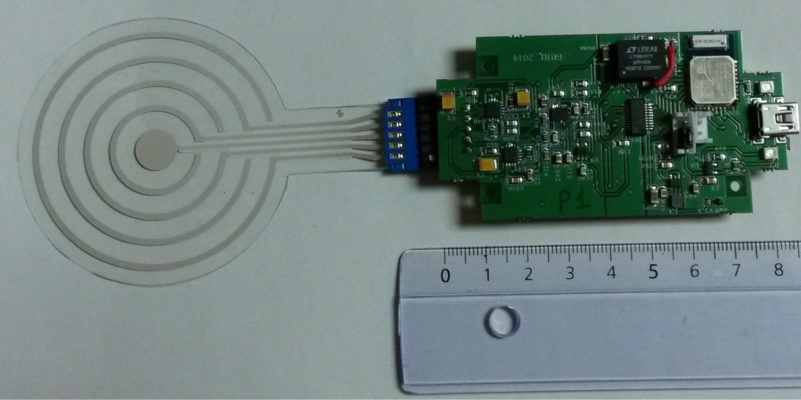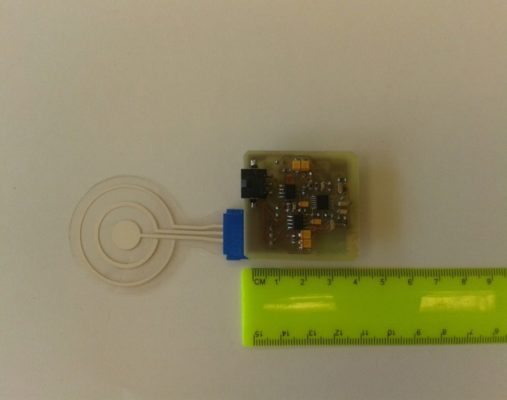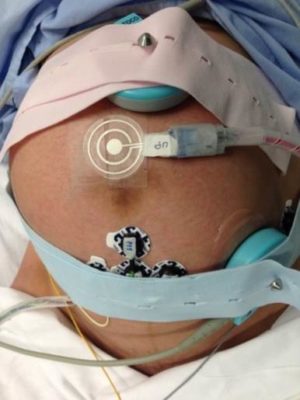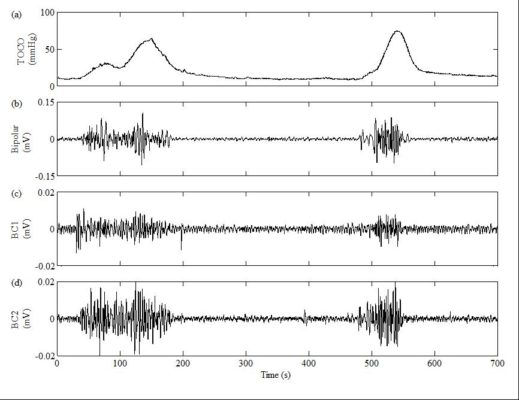Flexible concentric electrodes, wireless recording
System for high precision recording of electrocardiographic signals based on concentric ring electrode (SP20120469)
Wireless monitoring system for uterine electrical activity to help diagnose the need and success of labor induction (SP20120490)
Usually, bioelectrical signals are recorded on the body surface using disc electrodes, in a monopolar or bipolar configuration. These electrodes have a low spatial resolution due to the blurring effect of the conductive volume. In this respect, it has been demonstrated that the concentric annular electrodes (CRE) that directly estimate the Laplacian surface potential allow acquiring more localized electrical activity than the disk electrodes. At a computational level, it has been shown that the size of the CRE is closely related to the depth of the electric dipole that is to be captured. The development and use of a multianular concentric electrode would allow to evaluate the influence of the size of the CRE on the bioelectric signal captured. On the other hand, given that the amplitude of the bioelectric signal captured by the concentric annular electrodes is very weak, high precision instrumentation systems are needed that reduce the level of noise and interference in order to adequately condition these signals. In this respect, active electrodes are usually used that integrate a preamp circuit placed as close as possible to the electrode and transmit the signal captured by cables to the external biosignal amplifier for signal conditioning. In this context, the current trend is to minimize the wiring and develop portable or wireless systems that provide greater patient comfort and simplify the registration system.
Therefore, the objective of these projects is on the one hand to develop novel multipolar electrodes of annular configuration implemented on flexible substrates, also simplifying the recording system by eliminating the need for external cables and amplifiers, providing these sensors with a wireless signal conditioning and transmission circuit. All this in order to improve the quality of the signals collected, obtain more accurate information than that obtained with conventional disc electrodes, and with the greatest convenience for the clinician and the patient during the registration. This system was tested both in the areas of cardiac monitoring and diagnosis and in obstetrics. Likewise, the use of this type of sensors and systems is extended to the sensing of other bioelectric signals: such as from respiratory muscle, gastrointestinal, or brain.
New manufacturing techniques have been developed for the implementation of flexible annular electrodes. Compared with the screen printing technique, the manufacture of flexible annular electrodes with the new inkjet technique has allowed the implementation of electrodes of greater contour definition, also reducing the time of manufacture of newly designed electrodes (prototyping), although for implementation of multiple units of a certain design it has been seen that the technique of screen printing is more convenient.
The development of the wireless recording system based on low energy Bluetooth technology low energy BLE has allowed monitoring the electrocardiographic signal for 24 h or more without any wiring, which means greater comfort for patients who are being monitored and a saving in time and in the cost to the experimenter (cardiologists and researchers). On the other hand, a wireless recording system based on Bluetooth 2.0 + EDR technology has also been developed for more demanding applications in terms of resolution and sampling speed.
The results obtained from the analysis of the electrocardiographic signal registered with this system and multi-ring electrodes have enabled this system to be validated for biomedical signal monitoring applications in a simple and fast way without any cables. In addition, the ability of such system to emphasize certain specific components of the organ under study has been demonstrated, and it has allowed to study the influence of the dimensions and configuration of the annular electrode in signal capture.
Likewise, the performance of conventional annular electrodes and disk electrodes for the acquisition of the uterine myoelectric signal in term pregnant women have been compared. Compared with disc electrodes, the detectability of uterine contractions of the annular electrodes is slightly lower. In addition, the characteristics of the EHG signals captured with annular electrodes are similar to those acquired with disc electrodes, proving its feasibility for future clinical use. [More results in specific projects in that area]
These modules are being used by researchers and clinical staff of the University Hospital and Polytechnic la Fe of Valencia to obtain records of uterine myoelectric activity in different obstetric scenarios.
These results of these projects have resulted in 5 publications in JCR journals, 1 national patent, 4 publications in international and / or national conferences.


